Results 8,281 to 8,290 of 12096
Thread: Anandtech News
-
06-14-18, 10:25 AM #8281
Anandtech: Behind GIGABYTE’s Fish Tank Oil System: A New Take on Liquid Cooling
One of the more interesting designs out of the computer industry recently has been GIGABYTE’s fish tank PC build. The concept is similar to a simple mineral oil or thermal cycling PC, however GIGABYTE doubled up on immiscible liquids by also adding a fish tank in the top half of a bifurcated system. The fish have lived in the top part for two months now, and the other liquid in the system is a 3M Novec/Fluorinert variant as we have seen about a hundred dozen times before.
What I wanted to point out about this system was not the fact it has fish, but the liquid cooling loop. Normal water cooling involves a pump and a radiator, with the radiator having lots of fins and fans to push the water through and remove the heat. For this system, GIGABYTE did it a little differently.
Instead of a radiator, GIGABYTE used thermal blocks connected to standard CPU heatsinks and fans. The result is three CPU coolers connected to thermal blocks and they take the heat away. It is an interesting idea, especially when dealing with non-traditional liquids.
For any system builders and modders out there, it would be interesting to see this done in a traditional PC.
Want to keep up to date with all of our Computex 2018 Coverage? 
Laptops
Hardware
ChipsFollow AnandTech's breaking news here!
More...
-
06-14-18, 11:15 AM #8282
Anandtech: G.Skill Trident Royal Crystalline DRAM: Premium Gemstone Glamour
Despite virtually everything in the consumer world being unnecessarily stuffed to the gills with RGB LEDs, they seem to sell like hotcakes. I was told earlier this year by one company that when they added RGBs to their most popular product, it outsold the non-RGB version 6:1 in the following six months. If you like it or loathe it, RGB is here to stay. But not all RGB-equipped devices have to be a dire shade of color.
Enter G.Skill’s Trident Royal memory. This product was easily one of the stars of Computex, despite still only being a prototype. Most modern DDR4 memory today with LEDs use a top bar above the memory PCB with some form of plastic diffuser, akin to a stage light, in order to get a softer glow from a very bright LED. What G.Skill has done is implement a crystalline like diffuser cap to its memory, taking advantage of photon reflections as much as diffraction.
The best way to describe it is that this memory belongs in a jewellery shop. It was presented on a spinning plinth, and the crystalline cap on the memory adds that a level of feeling expensive that normally comes with expensive gemstones or a decent Swarovski trinket. The crystalline looking cap is likely some form of molded plastic, as with other caps, however it is as transparent as it needs to be, both hiding the LEDs but also creating a uniform color intensity across the module.
G.Skill were asking for feedback at the show, and it makes sense that they should reserve this treatment for their high-end or high-capacity multi-module kits. The only downside is that unlike G.Skill’s current memory, it doesn’t have a name directly on the top to identify the brand, however as of yet they are the only company putting on a demo with this.
Want to keep up to date with all of our Computex 2018 Coverage? 
Laptops
Hardware
ChipsFollow AnandTech's breaking news here!
More...
-
06-15-18, 08:09 AM #8283
Anandtech: AMD BIOS Limitations: Bristol Ridge Dropped From Certain Motherboards
One of the functions of a motherboard BIOS, or UEFI, is the ability to discern which CPU is installed in the socket. With each new generation of CPUs, new versions of BIOS firmware are launched such that the new processors can be detected and run. It is impossible to know in advance which CPUs are coming out 12-24 months in the future, so users need to update their BIOS before updating CPUs.
Users who have invested in AMD’s AM4 platform, pairing a Ryzen-2000 series CPU or APU with an early revision of the A320/B350/X370 motherboards might already be too familiar with this: buying a motherboard which should support the CPU on the latest BIOS, but the retailer has older stock which has not been updated. To solve this, AMD initiated a program whereby the company would send the user an early-series Bristol Ridge processor and cooler so the user could get the system to Boot, then the user can update the BIOS to use the new processor. Similar issues happen with Intel’s platforms as well, although they have been publicised less as Intel uses new sockets and chipsets more frequently.
One of the advantages of updating sockets and chipsets more frequency is that the microcode required for previous generations of processors is not in the BIOS. By having a socket and platform that has a long life span, in order to support every processor, the BIOS has to contain all the microcode required for those processors. All of it. This can cause problems, such as the problems that some motherboard manufacturers are facing today.
During Computex, several manufacturers told us one of two things: either they would be dropping support for Bristol Ridge processors on some systems, or they have had to increase the size of the BIOS chip in order to retain support.
Most motherboards in the market use a single 128 Mb (mega-bit, 16 megabytes) BIOS chip that has to contain all the data and code for the system to be able to detect the processor and train the memory to the correct frequency. It would appear that for some motherboard vendors, due to the features in their BIOS, are now running out of space. Because of the age of Bristol Ridge, and the fact that the processors were not widely distributed at retail in the first place, the range of processors seem to be getting the chop from certain motherboard models.
The simple way to support all the processors is to increase the size of the BIOS chip, by moving from 128 Mb to 256 Mb. At least two vendors told us that the price of these larger chips is more than double the 128 Mb chips. Not only this, but they have so many 128 Mb chips in stock already (or purchase agreements), it would not be economically feasible to switch and dump. One company, Biostar, said that they were implementing motherboards with two BIOS chips in a striped configuration, giving an effective capacity of 256 Mb, in order to solve this issue. The only downside here is that the system is using two BIOS chips, effectively doubling the cost to implement a BIOS on the motherboard. For low end systems, this is an additional cost that might push the product out of a competitive price range.
Another solution would be to bifurcate BIOS versions, giving one support for Bristol Ridge but not the latest processors, and a second for the latest. The danger here is that if a user flashes to the wrong version or the Bristol Ridge BIOS version might be put to legacy very quickly, and not receive relevant security updates if needed.
To date AMD has launched / announced a total of 45+ processors for the AM4 platform. This rises to 55 with the recent GE and Athlon models, and more if the BIOS listings about more Ryzen-2000 series processors are to be believed.
For context, we did some counting on our internal processor database, and the top sockets that should have interchangeable processors are as follows:
Judging by these numbers, the number of AM4 processors is actually relatively small compared to some of the big ones. Either that means the microcode per processor on AM4 is much larger, or the base code required for the platform is much larger.Most Recent Populous CPU Platforms Total Breakdown AMD AM3/AM3+ 152 Vishera 16 Zambezi 14 Phenom II 44 Athlon II 46 Sempron 6 Others 26 Intel LGA1156 121 Sandy Bridge Core + Xeon 52 + 12 Ivy Bridge Core + Xeon 46 + 11 Intel LGA1150 112 Haswell Core + Xeon 80 + 26 Broadwell Core + Xeon 2 + 4 AMD FM2/FM2+ 78 Carrizo 2 Kaveri Refresh 17 Kaveri 17 Richland 27 Trinity 15 AMD AM4 59 Ryzen 2000 CPU 4 + 4 Ryzen 2000 APU + Pro 5 + 5 Ryzen 1000 CPU + Pro 9 + 6 Bristol Ridge + Pro 13 + 7 Carrizo Pro 6
The overall take-home message is that we will start seeing BIOSes that remove support for Bristol Ridge, and/or Bristol Ridge Pro, or we might end up with AM4 motherboards targeted towards certain processor families only. The best way to get around this would be for all motherboards to get a bigger BIOS chip (or use two chips and stripe), however that does not do much for the motherboards that are already on the market.
Update:
I should add that another way to solve this issue is to have simpler BIOS interfaces. The drive in recent years to have flashy all-singing and all-dancing UEFI interfaces has made the BIOS file bloom in size. It may be a case that some vendors will exchange features in the UEFI interface in order to support these chips.
Update 2:
People have asked questions about upcoming Ryzen CPUs, and if these motherboards might drop support for other chips as well. There are two ways to think about this: either the microcode for the Ryzen/Zen based chips has a lot of commonality that this shouldn't be too much of an issue, or we might see some BIOSes drop support for the Ryzen Pro CPUs, as they are not often sold at retail. I suspect that motherboard vendors will be moving quickly such that all future motherboards should not have any of these issues, however that doesn't say much about the current boards on the market.
Buy AMD Ryzen 7 2700X on Amazon.com
Want to keep up to date with all of our Computex 2018 Coverage? 
Laptops
Hardware
ChipsFollow AnandTech's breaking news here!
More...
-
06-15-18, 09:37 AM #8284
Anandtech: Lenovo Unveils ThinkPad P52: 8th Gen Core or Xeon, Quadro 3200, and 128GB
The new ThinkPad P52, according to Lenovo, 'sets the standard for mobile workstations by combining ThinkPad build-quality along with cutting-edge technology'. All the horsepower is designed to handle modern workloads like VR and AR content, 3D rendering, and video editing, all in a mobile solution. Lenovo adds an NVIDIA Quadro P3200 GPU along with Intel Hexa-core CPUs (even a Xeon option) delivering their first 15-inch VR-Ready Certified mobile workstation to market.
The chassis doesn’t look much different at all from previous ThinkPad,s with its black chassis and ‘for business’ styling. About the only changes are a marginally revised keyboard which still keeps the dedicated number pad along with a Wi-Fi status LED and the "ThinkShutter" (webcam cover), for an optional IR Camera that supporting Windows Hello.
In regards to ports, Lenovo has chosen to add another Thunderbolt 3 port, for a total of two, and eliminating a USB Type-A port and bottom docking connector. It can dock with the ThinkPad Thunderbolt Workstation dock instead. Other connectors include three USB 3.0 ports, HDMI (2.0) and mini-DisplayPort (1.4), mic/headphone combo jack, RJ45 for Gigabit Ethernet as well as SD and Smart Card readers. Wireless duties are handled by the Intel 9560 CNVi device supporting 802.11ac and maximum speeds to 1.74 Gbps along with Bluetooth 5.0. It also has WWAN options in a Fibocomm 4G LTE card.
The P52 includes a choice of two displays, the base 15.6-inch in 1920x1080 FHD panel with 300nits brightness and 72% NTSC color gamut or a 15.6-inch 3840x2160 (UHD) model with 400nits and 100% Adobe color gamut. Driving the panels is up to a NVIDIA Quadro P3200 which is a notable improvement over previous generations who maxed out at Quadro 2000 series GPUs. The Quadro 3200 is based on Pascal GPU architecture and comes with 6GB of GDDR5.
CPU choices are not listed in detail but they did state up to hex-core 8th Generation Intel Xeon and Core CPUs. I would expect to see something from the U-series processors here. A notable option here is with the RAM with the Lenovo P52 offering up to a whopping 128GB of non-ECC RAM or 64GB of ECC RAM. In order to hit 128 GB of non-ECC, Lenovo are likely using Samsung's recently announced 32 GB SO-DIMM modules we reported on recently. Storage is listed as up to 6TB and uses a combination of PCIe M.2 device and 2.5" HDDs to get there.
Lenovo did not mention a price for the ThinkPad P52 mobile workstation but did say it would be available this month.Lenovo P52 Mobile Workstation P52 Processor 8th Generation Intel Xeon and Core CPUs Memory Up to 128GB DDR4 (non-ECC)
Up to 64GB DDR (ECC)Video Graphics Up to NVIDIA Quadro P3200 Internal Storage Up to 6TB Display Options 15.6" FHD, 300nits, 72% NTSC
15.6" UHD, 400nits, 100% Adobe RGBNetwork WLAN - Intel 9560 - 802.11ac (1.73 Gbps)
Bluetooth 5.0
WWAN - Fibocomm 4G LTEDigital Media Integrated 4-in-1 Card Reader Keyboard Full-size with dedicated number padExternal Notebook
Ports3 x USB 3.0
2 x USB-C Thunderbolt 3
1 x HDMI (2.0)
1 x mDP (1.4)
1 x Mic/Headphone jack
1 x SD Card Reader
1 Smart Card Reader
RJ45 Gigabit EthernetDimensions / Weight 14.86 x 9.93 x 0.96-inch
5.4 lbs+Battery / Battery Life 90 Wh
170W AC adapterPrice ???
Buy Lenovo Thinkpad Core i5 (7th Gen) on Amazon.com
Related Reading:- Gigabyte Sabre 15 and 17 Gaming Laptops: Affordable Portable Gaming
- MSI Prestige LS42 Laptop: Made for Business
- Acer Predator Helios 300 SE: White and Gold Gaming Laptop
- First 10nm Cannon Lake Laptop Spotted Online: Lenovo Ideapad 330 for $449
More...
-
06-15-18, 11:01 AM #8285
Anandtech: The Huawei P20 & P20 Pro Review
Following the April launch of the new Huawei P20 Pro and P20, we have a look again at a detailed view of the how the device performs in terms of performance, battery life, and more importantly, just how exactly that 40MP camera performs in everyday scenarios. We’ll see some interesting suprises such as some outstanding battery life from Huawei’s new flagships along with some a new tier in terms of low-light photography. Stay tuned for the full review.
More...
-
06-15-18, 01:55 PM #8286
Anandtech: Colorful’s GTX 1080 Ti ‘Kudan’ Limited Edition GPU: 50 Units Made in 2017
If you are on the market for a collectible, do not bother with Intel’s Core i7-8086K, try to find Colorful’s iGame GeForce GTX 1080 Ti Kudan if you can.
Just days ago, Intel released its limited edition Core i7-8086K processor to celebrate the 40th anniversary of the x86 ISA. 50,000 of such CPUs will be produced with many going to Intel’s partners, sweepstake winners, and various VIPs, which will make the chip a collectable item a decade from now. Meanwhile, there are up-to-date products that are collectables even today. Meet Colorful’s iGame GeForce GTX 1080 Ti Kudan. Only 50 of these were produced last year and while theoretically they remain in production, do not expect them to become a mass product.
The Colorful iGame GeForce GTX 1080 Ti Kudan is not a new graphics card. It was introduced sometime in Q4 2017 and hit the market in December, an event we covered back then. The graphics card has a special “Turbo” BIOS mode and sets GPU frequencies to 1657 MHz/1784 MHz (base/boost), which is among the highest factory-overclock settings for NVIDIA’s GP102 in the industry. In fact, at nearly 1.8 GHz, the GPU on the GTX 1080 Ti Kudan card produces more TFLOPS than the GPU on NVIDIA’s Titan Xp. Higher compute performance does not mean that Colorful’s card is faster than the Titan Xp in all cases though, but this definitely sets the Kudan apart from other custom GeForce GTX 1080 Ti boards. Naturally, Colorful’s cards has a powerful VRM with iGame Pure-Power Inductance feature and silver-plated elements to reduce electric resistance. Obviously, it has a very sophisticated hybrid cooling system as well to guarantee stable operation. The graphics card was available in select stores in Japan for ¥158,890 (or $1399) late last year.
As reported, Kudan is the ninth-degree black belt in Japanese martial arts, the second highest rank after Judan (tenth-degree dan, the absolute top in modern martial arts). Kudan represents a rare top-grade master in martial arts that stands well above 99% of black belt holders. Only fifteen people in the worlds were ever promoted to Judan in Japan and there are only three living 10th dan holders, so even at 50 units made, the Kudan is not as rare as Judan. Nonetheless, Colorful’s card is more exotic than almost any graphics card that has ever reached the market.
Gallery: Colorful’s GeForce GTX 1080 Ti ‘Kudan’ Limited Edition Card: 50 Units Made in 2017Want to keep up to date with all of our Computex 2018 Coverage? 
Laptops
Hardware
ChipsFollow AnandTech's breaking news here! 

Buy Colorful GTX 1050 Ti Mini on Amazon.com
More...
-
06-15-18, 01:55 PM #8287
Anandtech: SilverStone Shows Off SST-ST2000-PT: 80Plus Platinum 2000 W PSU
SilverStone demonstrated the industry’s first 2000 W ATX power supply that carries the 80Plus Platinum badge at Computex this year. The Strider Platinum 2000 W PSU is aimed at overclockers as well as cryptocurrency miners who care about efficient and quality power supply.
The SilverStone SST-ST2000-PT PSU is compliant with the ATX12V v2.4 as well as EPS12V v2.92 standards and is rated for a 166.5 A maximum load and 1998 W power. The PSU carries the 80Plus Platinum logo and is therefore at least 92% at 50% load. The power supply is the industry’s first 2 kW ATX/EPS PSU to receive any 80Plus badge (at least based on the current list), so the fact that it actually carries one of the higher-grade logos looks important too.
Just like other high-wattage PSUs aimed at gaming and mining rigs, the SST-ST2000-PT features eight 8-pin PCIe power connectors to drive multiple graphics cards. Obviously, it will also feature multiple SATA power plugs and other cables for high-end systems.
Externally, the Strider Platinum 2000 W from SilverStone looks similar to the company’s Strider Titanium 1500 W, so it is possible that the two PSUs rely on the same platform and have some similarities internally as well.
It is noteworthy that the SST-ST2000-PT unit demonstrated at Computex did not feature the SilverStone logo, which may indicate that the PSU is still in its final development stages. In the meantime, if SilverStone is demonstrating the product, it is highly likely that it will be available in the coming quarters. As for pricing, a 2 kW 80Plus Platinum PSU is not going to be cheap, but if you need to power an overclocked extreme workstation, then this one will be a good candidate.
Buy SilverStone Strider Platinum 1200W on Amazon.com
Want to keep up to date with all of our Computex 2018 Coverage? 
Laptops
Hardware
ChipsFollow AnandTech's breaking news here!
More...
-
06-15-18, 07:14 PM #8288
Anandtech: MIPS Acquired by AI Hardware Vendor Wave Computing
After a year-long on-and-on search for a suitor, MIPS has finally found its partner. Today the company has announced that it’s being acquired by Wave Computing, an AI startup with close ties to the company, and whom will be using MIPS’ technology to further advance their own AI product portfolio.
MIPS sale has been more than a year in the making, going back to 2017 when Imagination Technologies began shopping the division around in the wake of losing Apple as a GPU customer. Imagination opted to focus exclusively on their GPU and related businesses, leading to the company putting MIPS and other non-GPU divisions up for sale. At the time Imagination was unsuccessful in selling off MIPS, and eventually Imagination itself was acquired by Canyon Bridge, which ultimately resulted in MIPS being sold to Tallwood Venture Capital due to geopolitical concerns.
At the time Tallwood did not announce what they intended to do with MIPS, but with a history of rehabilitating and flipping companies, a resale was likely. And indeed, this is exactly what has happened.
Wave Computing, in turn, is a small but not unknown name in Silicon Valley. The company has been around since 2010 but is still venture-capital backed and operating as a startup, with a focus on machine learning and artificial intelligence. Importantly, Wave Computing already has close ties to MIPS both as a customer and in terms of personnel. The company is a recent MIPS client, tapping MIPS’ CPU designs for their planned second generation of products. Meanwhile several staff members, including CEO Derek Meyer, whom was once a MIPS VP. The end result being that MIPS has essentially been acquired by one of their clients for their non-exclusive use.
For their part, Wave Computing has stated that they intend to use MIPS technology to expand their machine learning product portfolio. Specifically, the company is looking to branch out from datacenter ML training to ML inference in edge devices, where MIPS’ existing products and their own work into inference products would be a natural counterpart to Wave Computing’s existing technology. Ultimately this would allow Wave Computing to offer a singular top-to-bottom machine learning product portfolio, with common technology ranging from datacenter training to the actual use of machine learning in edge and other end-user devices, giving them a leg up over vendors who can only supply one or the other.
It goes without saying that machine learning is considered to be a highly lucrative market by investors right now, especially on the back of NVIDIA’s phenomenal growth in the space. The market is still very young, and this marks the latest of many venture capital-related plays in the field to either grab a piece of what some analysts expect to be a very large pie, or to at least bump off the current kings of the market.
As for MIPS itself, it will continue to be operated as a business unit of Wave Computing. And importantly, Wave will continue to license out MIPS technology. Given Wave’s unique focus, the company has unsurprisingly already made it clear that they intend to offer future MIPS designs with their machine learning technology. Otherwise neither Wave nor MIPS have said much more about future plans, and while Wave has little reason not to continue with MIPS current initiatives, this is unlikely to lead to any kind of resurgence of MIPS in the high-end CPU IP market, as some have hoped to see.
Wrapping things up, Tallwood and Wave Computing are both private companies, the terms of the deal are not being disclosed. Though it is interesting to note that due to Wave Computing’s small size, Wave is ultimately acquiring a company almost as big as they are. Wave reportedly has just 100 employees, with MIPS being similarly sized.
More...
-
06-16-18, 09:29 AM #8289
Anandtech: The AnandTech Podcast, Episode 48: Computex 2018
Wrapping up Computex 2018 with discussions about AMD's Threadripper 2 with 32 cores, Intel's new limited edition Core i7-8086K, and that really odd 28-core 5 GHz demo where Intel forgot to mention it was overclocked. Also some discussion on the best of the rest of the show, including G.Skill's Royal memory, gaming smartphones, ASUS' dual screen technologies, Intel's QLC NAND, and hardware for miners.
The AnandTech Podcast, Episode 48
FeaturingiTunesIan Cutress, Host
Senior Editor
@IanCutressAnton Shilov
News Editor
@antonshilov
RSS - mp3, m4a
Direct Links - mp3, m4a
Total Time: 1 hour 42 minutes 37 seconds
Outline mm:ss
00:00 Introduction
01:07 Defining Extreme Workstation Processors (Intel and AMD)
02:53 AMD's Threadripper 2 announcement
10:51 Intel 28 core CPU at 5 GHz (overclocked)
33:24 Intel Core i7-8086K processor (Intel's first 5 GHz CPU)
41:59 Alva Jonathan (JagatReview) hits 7.2 GHz with LN2 on i7-8086K CPU
46:26 ASUS ROG Gaming Smartphone announced
52:13 G.Skill showcase Royal DDR4 memory
53:58 Tyan announce Ryzen with BMC
55:22 ASUS TUF Alliance going to be everywhere soon
58:14 ASUS Precog with dual screen prototype revealed and new Zenbook Pro
63:34 Intel 3D QLC and Micron 96-layer flash memory
67:10 UFS card readers: SMI, JMicron with finished designs out later in 2018
70:00 Realtek RTS 5762 SSD Controller, 3.5 Gbps read, 3 Gbps write
72:55 Plextor Quad SSD system featuring a Marvell PCIe switch
76:33 Seagate reveal Barracuda Pro 14 TB hard drive
78:32 802.11ax routers displayed from ASUS
80:05 Computex RGB focus over last few years
81:37 In Win Crown fans with rotating sub frame
83:09 Lian Li Strimer RGB PSU cable
88:06 Enermax $70 case with four RGB fans
89:18 3000 W PSUs from Afox and Qdion
96:52 Liquid-cooled mining systems, support for 16 cards per 4U rack
102:38 FIN
Edited by Gavin Bonshor
Related Reading- Intel Confirms Some Details about 28-Core 5 GHz Demonstration
- AMD Reveals Threadripper 2: Up to 32 Cores, 250W, X399 Refresh
- The Intel Core i7-8086K Review
- ASUS Gaming Smartphone: 11mm-style ROG Phone with Speed-Binned Snapdragon 845
- G.Skill Trident Royal Crystalline DRAM: Premium Gemstone Glamour
- Cooler Master Announces TUF Gaming Alliance with ASUS
- UFS - USB Bridge Controllers for Card Readers, Hosts Incoming from JMicron & SMI
- ASUS Announces a Complete Lineup of 802.11ax Routers
- Lian Li Launches Strimer RGB PSU Cable
- Afox and Qdion Have 3kW PSUs for Cryptocurrency Miners
More...
-
06-18-18, 10:11 AM #8290
Anandtech: BIOSTAR Updates a Popular Motherboard: The X470GTN
Would it surprise you that our most popular AM4 motherboard review to date was Biostar’s mini-ITX offering, the X370GTN? At the time it was launched, it was the only AM4 mini-ITX motherboard on the market, and despite the fact that it took ages to get one (after being told no by the PR company for two months, one talk direct with Biostar solved the issue), it sits atop of our most popular AM4 reviews. So now that it is set to get an upgrade to X470, we will have to get the new one in to test.
The new chipset affords a few advantages which are common to all X470 motherboards: automatic support for Ryzen-2000 CPUs, support for Precision Boost 2, support for StoreMI, and an overall chipset power consumption decrease. With the new board from Biostar, other updates include some of the component placement to improve efficiency, as well as audio adjustments for a supposedly cleaner sound.
As with motherboards of this size, memory is limited to two slots, which Biostar rates up to DDR4-3200. Also onboard is a single PCIe 3.0 x4 M.2 slot which support SATA drives as well, and interestingly Biostar has decided not to use the native USB 3.1 (10 Gbps) ports from the chipset and instead rely on an ASM2142 controller to provide them. Networking comes through a Realtek NIC, and the board has two addressable RGB headers.
We’ve reached out for a review unit, and we expect the price to be similar to the X370 model.
Buy Biostar X370GTN on Amazon.com
Gallery: BIOSTAR Updates a Popular Motherboard: The X470GTNWant to keep up to date with all of our Computex 2018 Coverage? 
Laptops
Hardware
ChipsFollow AnandTech's breaking news here! 


More...
Thread Information
Users Browsing this Thread
There are currently 48 users browsing this thread. (0 members and 48 guests)




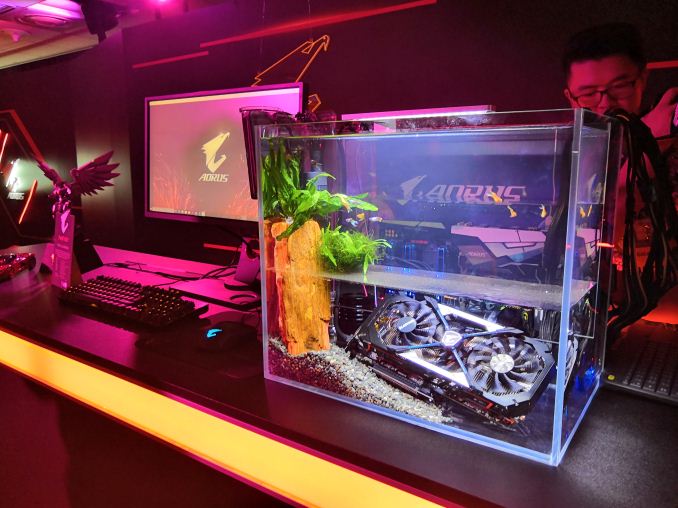
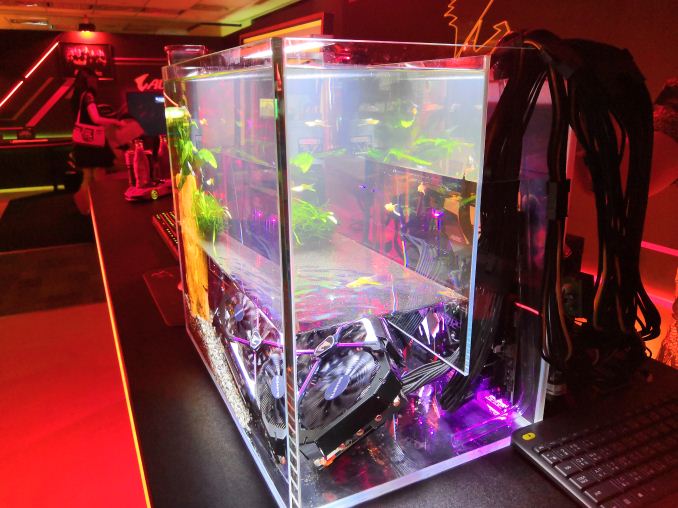
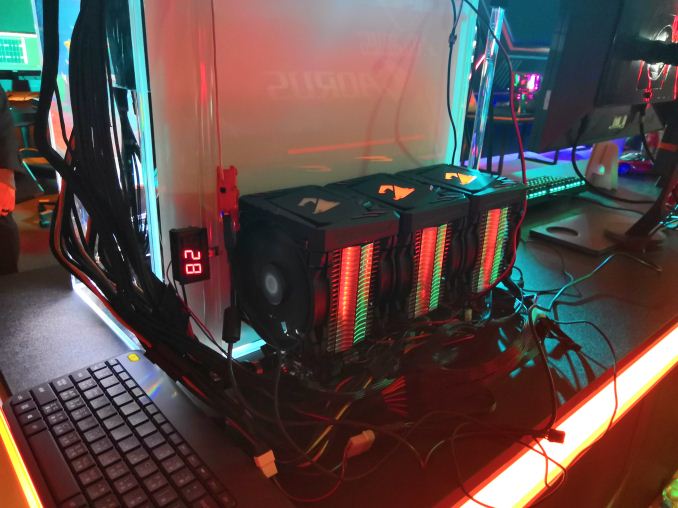
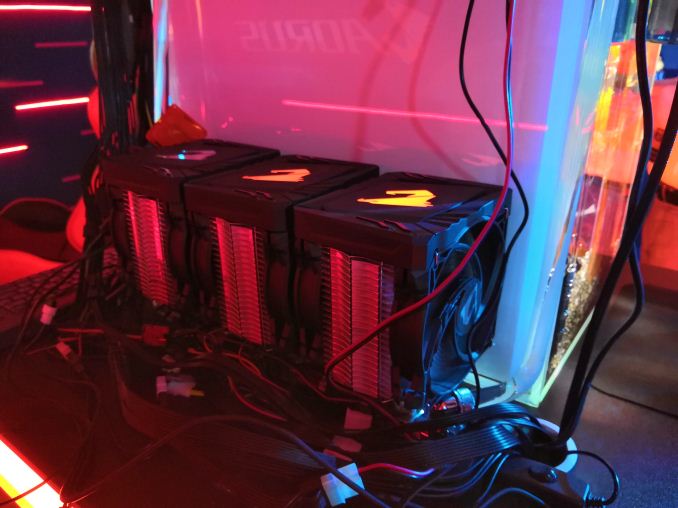


 Quote
Quote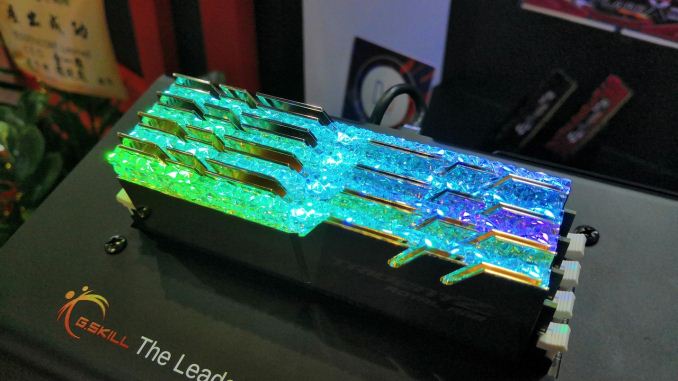
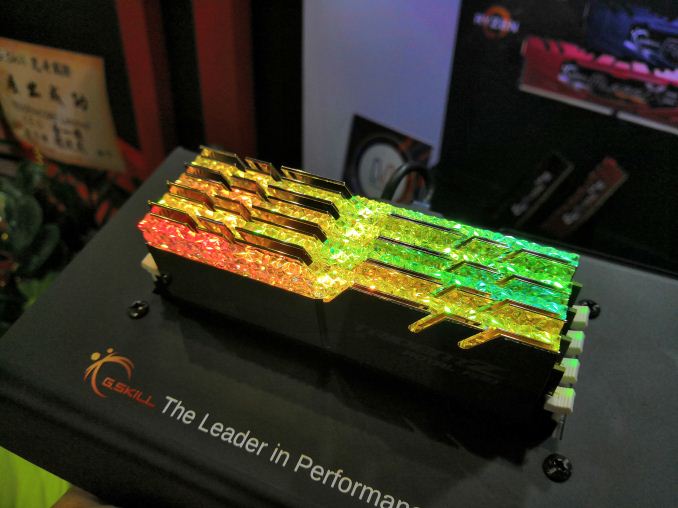
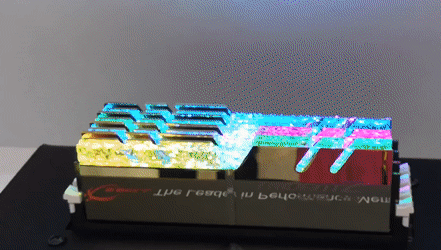

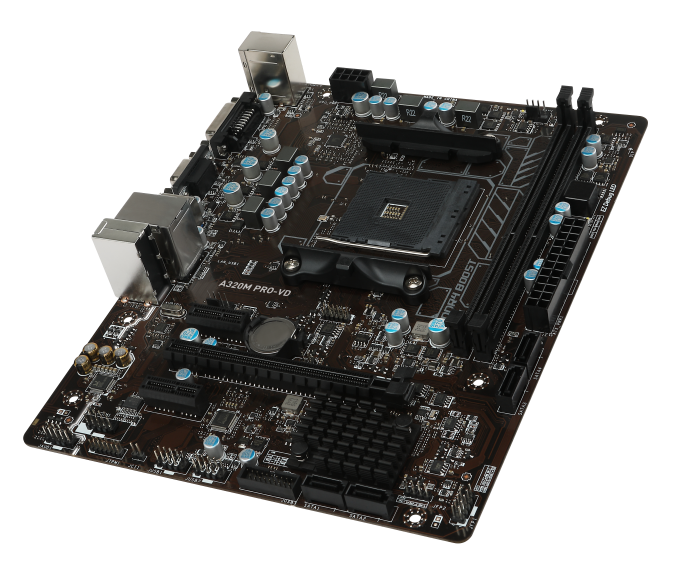
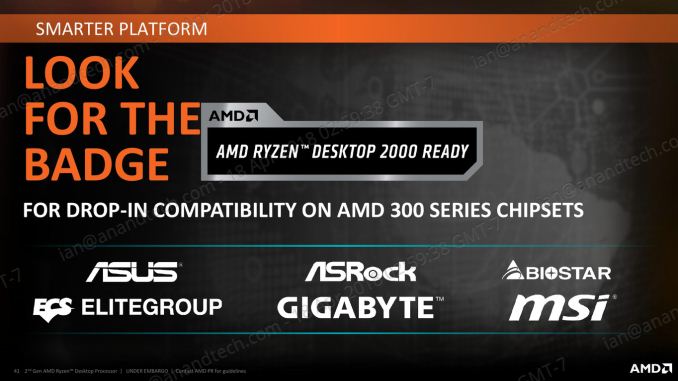
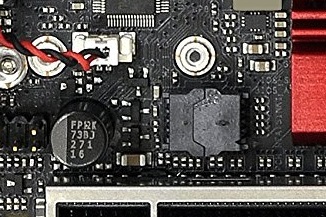
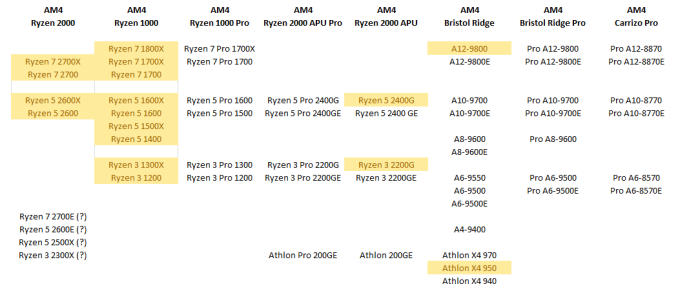
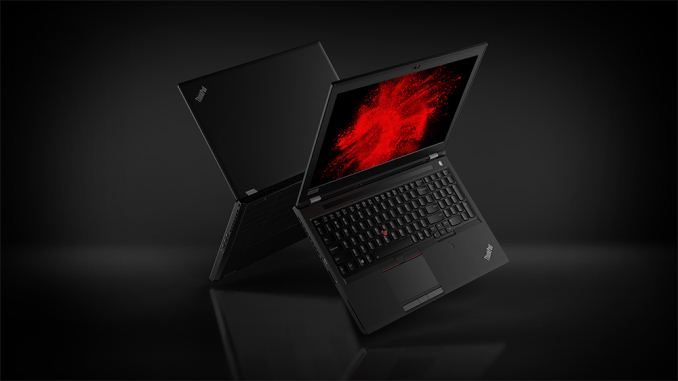
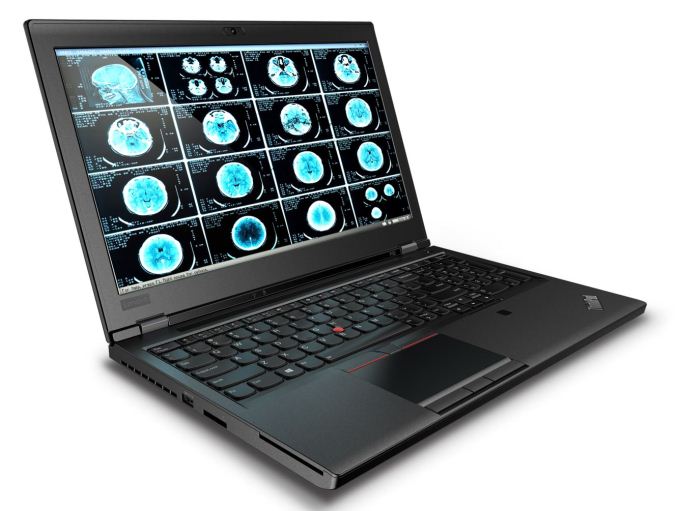

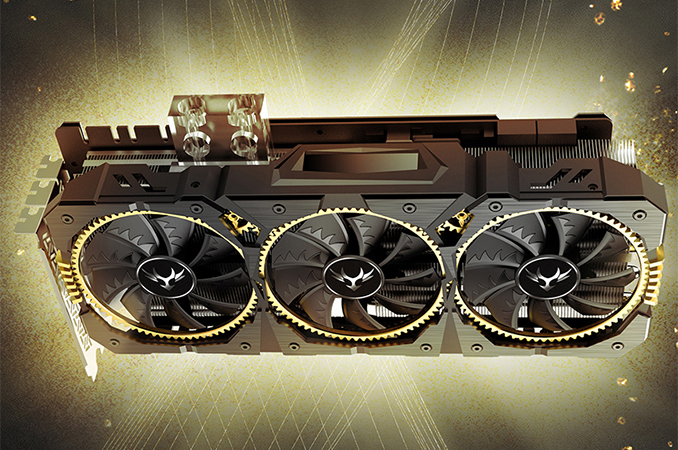
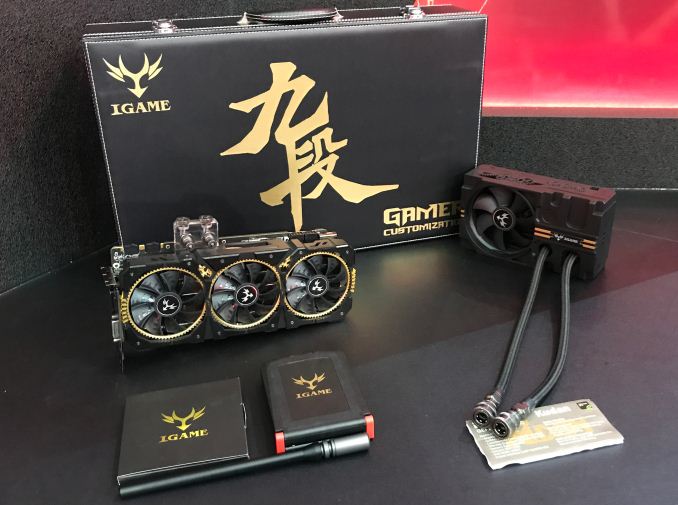

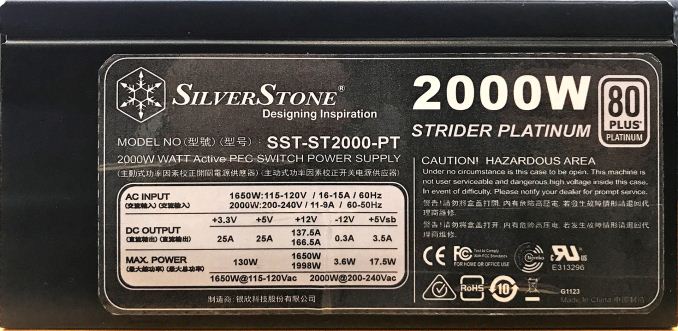




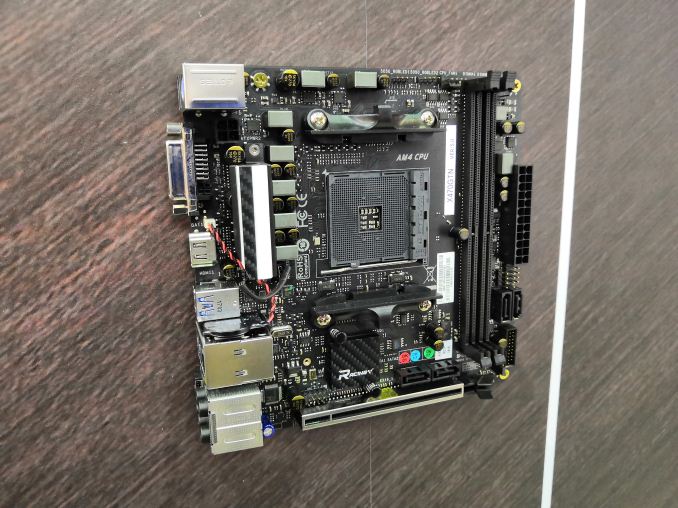
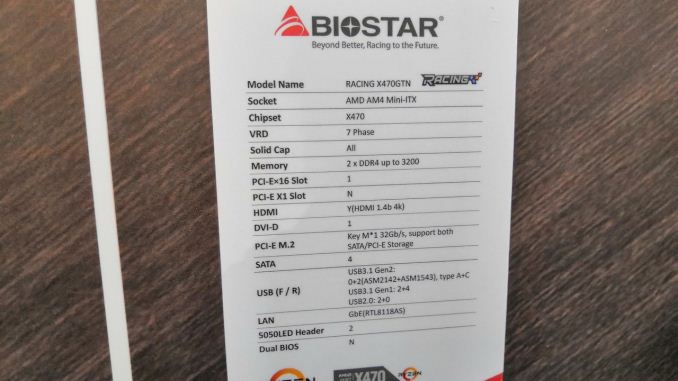

















Bookmarks